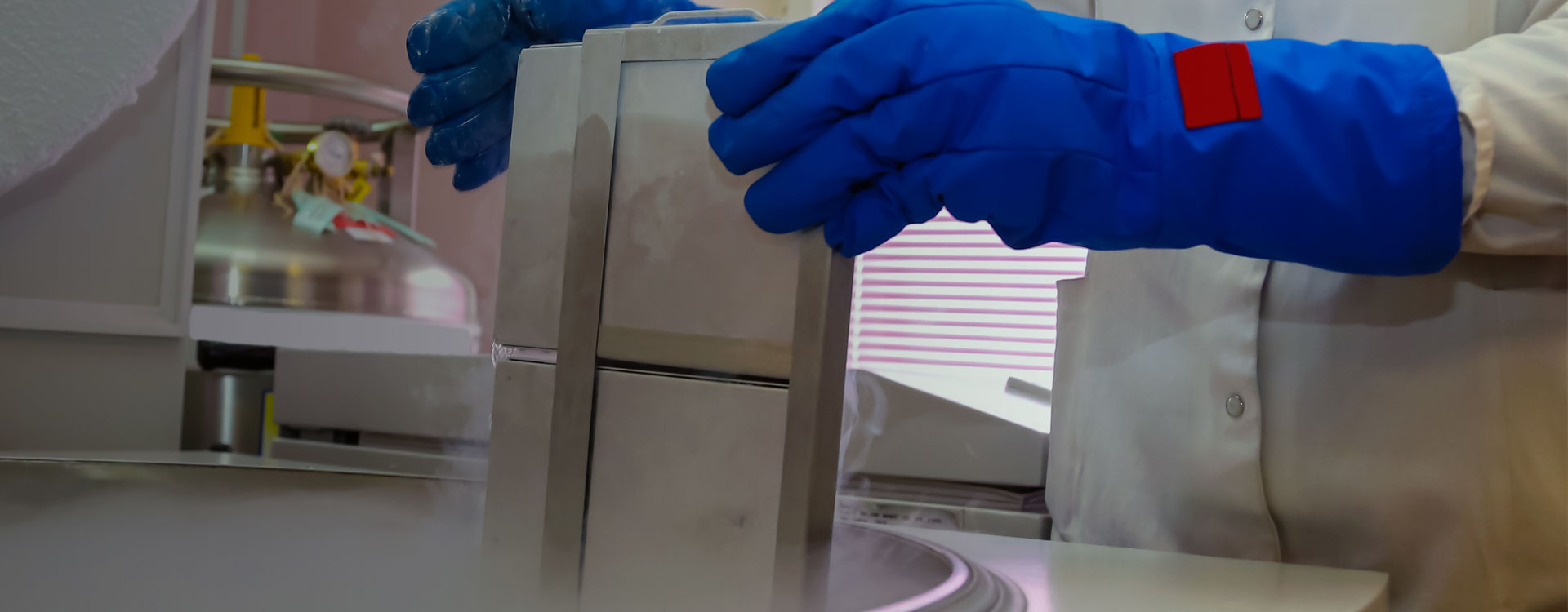Cord Blood Banking provides parents with the option to preserve their child’s cord blood stem cells, which may be used to treat a wide range of diseases and conditions in the future. Parents considering cord blood banking have three primary options available to them: private cord blood banking, public donation, or discard the stem cells.
With the private cord blood banking option, the stem-cell rich cord blood is preserved for use by your family in a manner that enables it to be utilized in the treatment of a variety of conditions. The cord blood can be used by your child or a close family member such as a sibling, parent or grand-parent.
But what are the odds that your child or another family member will actually need their own cord blood? According to experts, the chances that you will need to use your child’s cord blood is rising significantly.
To date, there have been over 40,000 cord blood stem cell transplants performed, and the number is growing rapidly each year.
Probability of Cord Blood Use is Rising
A study showed that incidences of diseases treated with HSCT (hematopoietic stem cell transplantation) and of HSCTs performed increased with age, increasing even further after age 40. The study also concluded that numbers were higher for men than women. The overall probability of undergoing autologous HSCT (transplant using your own cord blood stem cells) and allogeneic HSCT (transplant using someone else's cord blood stem cells, such as from a sibling or child) is rising and most likely will continue to do so given increases in the number of families saving cord blood.
According to Parent’s Guide to Cord Blood, 1 in 217 people in the U.S. will actually undergo (not just need) a stem cell transplant by the time they turn 70 years old. To further break these statistics down, the study reported that 1 in 435 people will receive their own stem cells for treatment; 1 in 400 will receive someone else’s stem cells, and the combined total number of stem cell transplants will be 1 in 217 persons.
What these statistics don’t account for is the number of patients who may have needed a stem cell transplant at some point during their lifetime. Those numbers are assumed to be much higher. The numbers continue to climb if you consider the fact that stem cells from cord blood have been used to treat 80 diseases, thus far.
Imagine you are diagnosed with one of the given 80 diseases that can be treated with stem cell transplantation. Even if the state of your disease were to never progress to the point of requiring a stem cell transplant, you would feel secure knowing someone in your family has the stem cells banked.
To better illustrate the likelihood of use, consider that an estimated combined total of 176,200 people in the US are expected to be diagnosed with leukemia, lymphoma, or myeloma in 2020. Cord blood is being used to effectively treat leukemia and other forms of cancers. Research supports the fact that new treatments are being discovered and the use of cord blood is expanding.
Diseases such as Alzheimer's, which affects 26 million people worldwide, or Diabetes, which is the seventh leading cause of death in the U.S., are proving to be successfully treated with cord blood stem cell transplantation. Thus, the need to bank cord blood will continue to rise as we find new ways to treat once thought incurable conditions through the use of cord blood and cord tissue stem cells. Banking privately provides you with the assurance and the opportunity to manage these increasingly common conditions and to give you the best outcome by using cord blood stem cells from your child since they are as closely matched as possible.
New Findings Suggest More Uses for Cord Blood
As discussed, the use of cord blood is FDA-approved for the treatment of 80 diseases, including numerous types of malignancies, anemias, inherited metabolic disorders, and deficiencies of the immune system. To date, there have been more than 5,200 clinical trials initiated researching medical uses for cord blood stem cells, including studies for cerebral palsy, traumatic brain injury, juvenile diabetes, hearing loss, and speech disorders. The scope of regenerative medicine is including the use of cord blood stem cells as a strong link to a cure for these types of conditions.
Brain Injury
Clinical trials are being performed which indicate favorable effects of cord blood infusion in the treatment of brain hypoxia and stroke. The odds of a child being born with a brain injury is reported to be 2 out of 1,000 of all full-term births, with it being ten times more common among pre-term births. One study reported a 97% overall survival rate after a year follow-up of 184 children who had a brain injury and underwent an autologous (using the child’s own stem cells) cord blood infusion. There are also ongoing trials taking place to treat other forms of brain injury, such as neonatal oxygen deprivation in infants, and occurrences of adult brain injury, through the use of cord blood stem cells.
Autism
Other relevant studies are taking place regarding cord blood therapy in the treatment of autism spectrum disorder. Autism currently affects 1 in 59 children in the U.S. Clinical trial studies indicate promising results for autism. After a Duke University clinical trial phase one study, researchers found that more than two-thirds of the 25 children given an intravenous infusion of their own cord blood showed dramatic improvements in their sensory, social, repetitive and manipulative behaviors; as well as in their receptive and expressive communication. Other medical and research institutes are adopting further studies into stem cell use in the cure for autism as the CDC announced a 15% increase in national occurrence from just two years ago.
Metabolic diseases
Cord blood has been used with success to treat young children with metabolic diseases like adrenoleukodystrophy and infantile Krabbe's disease. The FDA has standardized cord blood stem cell transplantation in treating mucopolysaccharidoses storage diseases, leukodystrophy disorders, lysosomal storage diseases, as well as some inherited metabolic disorders.
Cerebral Palsy
Cerebral Palsy (CP) is the most common motor-function disability in children, affecting approximately one in 323. Duke University conducted a phase II clinical trial which involved following 63 children between the ages of one and six who incurred brain damage before or after birth, and who had CP classified as a level 2-4 on the Gross Motor Classification System. The study indicated that children who received a larger dose of cord blood stem cell transplant demonstrated a more substantial increase in normalized total brain connectivity and in the sensorimotor network than participants who received lower doses.
Other Findings
Ongoing research supports the fact that one's own cord blood could prove to be an effective treatment in neurological and degenerative diseases. Discoveries in the realm of regenerative medicine are showing benefits of cord blood banking to treat other pediatric neurological disorders like hypoxic-ischemic encephalopathy (HIE), apraxia, ataxia, hydrocephalus, in-utero stroke, and other forms of traumatic brain injury. Even more promising, are the advances in treating other conditions like multiple sclerosis, type 1 diabetes, hearing loss, sports injuries involving torn knee cartilage, and so much more. The breakthroughs taking place could prove to be monumental in the approach to how we view and treat these types of diseases.
The Importance of Cord Blood Banking
Studies have shown that transplant success rates correlate with donor cell matches. In other words, the closer the donor's cells match, the better for the recipient. Donors related to the patient are the best match.
Banking privately ensures that your child's cord blood would be available for you or your children, should you ever need it. According to the American Society of Blood and Marrow Transplantation, family member banking is encouraged when there is a sibling with a disease that has the potential to be successfully treated with an allogeneic transplant.
Your child’s own cord blood is always a 100% match for them - which makes it the preferred method for transplantation. Siblings from the same parents have a 65% chance of being a match and a child's cord blood always serves as a 25% chance of a match for either parent.
Minorities accounted for 28% of umbilical cord blood transplants in 2018. One scientific study concluded the difficulty for Black, Hispanic, and White patients of non-Western European background to find fully matched adult volunteer donors. The Cord Blood Connection Conference given last year indicated that 50% of minority patients who needed a blood stem cell transplant were unable to find a suitable match. This fact expounds upon the need to bank privately, especially for families of mixed and various ethnic backgrounds.
This same study showed that over 40,000 UCB transplantations were performed and over 25,000 patients have been cured.
The Future of Cord Blood Looks Promising
As medical science continues to advance, and clinical trial results are released, there will continue to be an obvious need for cord blood banking. We are just scratching the surface of what is and what can be possible in terms of cord blood use in treating diseases.
We all want to protect what matters most to us. The stem cells found in cord blood are known to be packed with regenerative properties and characteristics that make cord blood transplantation more successful.
Conclusion
What was once deemed improbable is now becoming more likely. The past thirty years have seen an explosive rate in research and understanding of how cord blood and cord tissue can be used. As parents, we have the responsibility of making tough choices. To take the first step is to educate ourselves on the reality of what is and to be open to the real possibility of what could be. Our generation is embarking on some exciting and innovative medical discoveries in terms of treatment. We are learning that cord blood is not merely used for treating children, but the odds of treating diseases that are diagnosed in the latter years of life have proven to be significantly more foreseeable as well.
DISCLAIMER: THE INFORMATION ON THIS WEBSITE IS NOT INTENDED TO BE USED AS MEDICAL ADVICE.The materials and information contained on the MiracleCord website is provided for educational and informational purposes only, and is not intended to, and does not constitute, medical or other health advice or diagnosis, and should not be used as such. You should not use this information to diagnose or treat a health problem or disease. If you are seeking personal medical advice, you should consult with a licensed physician. Always consult with a qualified health care provider regarding a medical condition.




